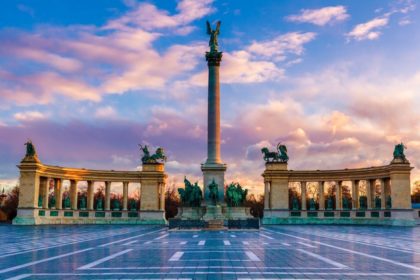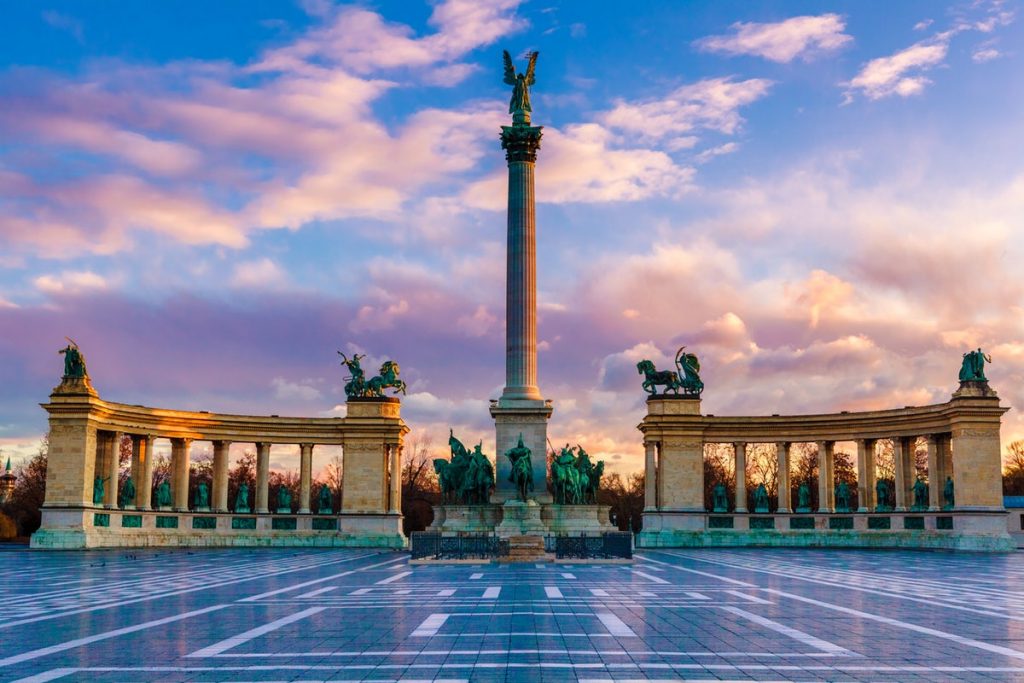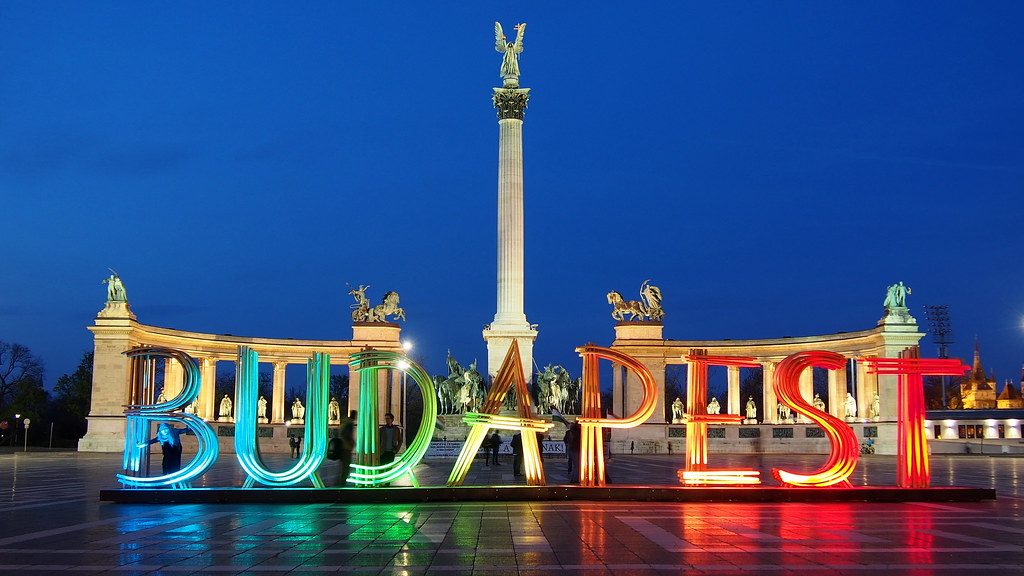

CONTACT US
1052 Budapest, Jane Haining Quay, Dock 11.
Customer support is available daily from 9:00 to 22:00.
Budapest, Jane Haining Quay, Dokk 11, 1052

Hero’s Square (Hősök tere) is the most spacious and most representative square in Budapest. You can found it in the district XIV and it’s the part of the World Heritage.
Before the end of the 19th century, this square didn’t exist. There were neither representative buildings nor statues. However, an imposing well (called Gloriette) was created on the base of Miklós Ybl’s plans. This artesian spring was found by Vilmos Zsigmondy. He started his work in 1868 and found the well only in 1877, on the 4th of June. In 1895, the prime minister (György Wekerle) and other leaders of the country decided to order a millenium monument on the place of Gloriette. They imagined this monument as a national pantheon.
In Hungary, there were two Communist regimes. The shorter one lasted only few months, but several statues of the monument were damaged during this period. For example, the statue of Joseph Franz was broken, and during the Horthy-regime, it needed to be re-created. The name of Hero’s square comes from 1932. At this time, it was decorated with flowerbeds. It received stone pavement in 1937 for the 34. Eucharistic World Congress. In the 2nd world war, the Monument was again damaged. Later, during the Communist regime, some statues, especially the Habsburg kings were replaced. The statues of freedom fighters appeared at that time, and they stayed on the square after the end of the dictatorship. The original statues have been transported to some depositories. According to the plans, they’ll be exhibited in the Museum of Fine Arts.

In the middle of the square, you can find the Millennial Monument. On the top of its column, there is the statue of Gabriel archangel, while on the pedestal you can see the chiefs of Hungarian tribes who performed the Conquest. On the middle, there is Árpád, and on his sides, there are Tétény, Ond, Kond, Tas, Huba, and Előd.
From right and left to the Monument, there are two peristyles. In the left one, you can adore the statues of some famous kings (Saint Stephen, Saint Ladislaus, Kalman, Andras II, Béla IV, Charles I, and Louis the Great. Two symbolic figures are also located: the statue of the Work& Prosperity, and the warrior cart of the War.
In the right peristyle, there are the statues of King Mátyás and other famous characters of Hungarian history. János Hunyadi led successful wars against the Turkish in the 15th century, Gábor Bethlen was a prince of Transylvania and during his reign, the region was prosperous in the field of economy, politics, and culture. István Bocskai, Imre Thököly, Ferenc Rákóczi II and Kossuth all fought for Hungarian freedom and independence against the Habsburg emperors. On top of this peristyle, you can also admire symbolic figures: the Knowledge& Glory, and – opposite to the War – the Peace. A special stone also belongs to the Monument. This was located there in 1929 and it’s called the memorial stone of Hungarian heroes. Between this stone and the statue of Árpád, there is a metal slab. This hides the artesian spring which was found by Vilmos Zsigmondy.

Besides the Millennium Monument and its statues, we must mention two further buildings on the heroes’ square. First of all, the Hall of Art was built in 1896. The Museum of Fine Arts is another famous historical buildings of Budapest. It was opened in 1906 and it’s the last building in the country which was designed in the so-called eclectic style. This style alloy the elements of Gothic, Roman, Renaissance, Classic, or even Baroque styles. The Monument works as an imposing connecting element between these two buildings. They were designed by Albert Schickedanz and Fülöp Ferenc Herzog. The statues of the Monument was made of bronze and created by György Zala.
It’s a beloved location for both political and cultural events which are waiting for several visitors. On the 16th July in 1989, the square had a great role in the reburial of Imre Nagy (who was a martyr of the revolution in 1956). On the 20th of August in 1991, the actual pope (János Pál II) celebrated a mass on the square; for religious people, it was a significant event of Budapest history. Approximately, 200 thousand people took part in it! Last but not least, a quite modern tradition is organized here since 2008. It is called National Gallop which is a special horse race because the competitors wear spectacular costumes of hussars.
Visiting of the Heroe’s Square (Hősök tere) can be connected with a pleasant tour to the City Park (Városliget). It is a nice park where you can not only walk but also enjoy the Széchenyi bath, the Vajdahunyad castle, the Zoo or the Circus of Budapest or rink.